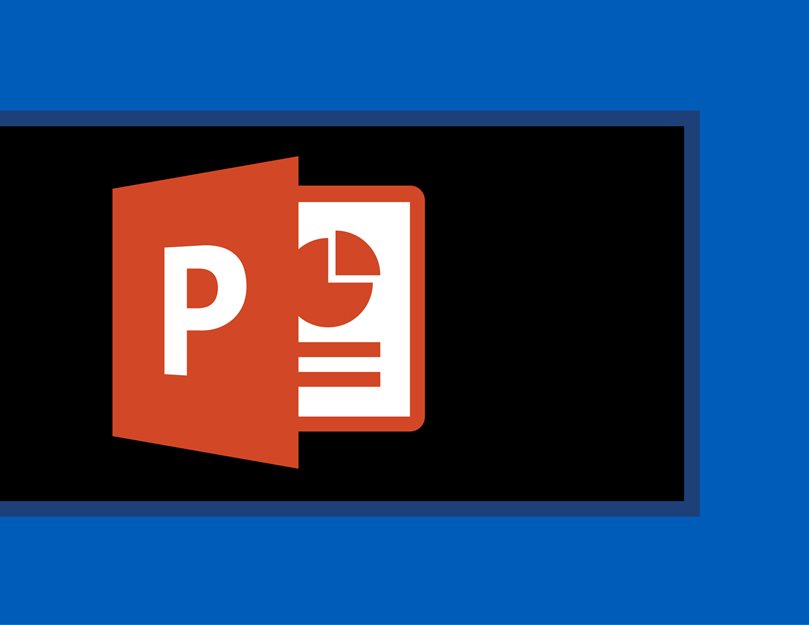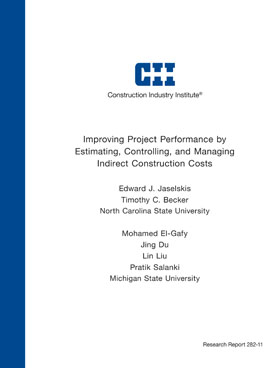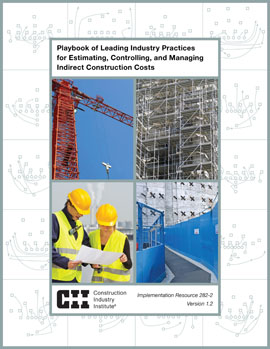
Leading Industry Practices for Estimating, Controlling, and Managing Indirect Construction Costs, Ve
In response to the pressures of current market conditions, including intense global competition, low barriers to entry, and the low-cost global exchange of digital information, the Construction Industry Institute (CII) identified the optimization of indirect construction costs (IDCC) as a strategic focus area for process improvement. Specifically, CII established Research Team (RT) 282 to investigate the leading industry practices for optimizing IDCC.
Since all projects incur IDCC, all owners and contractors face responsibilities, obligations, and opportunities with respect to IDCC. Contractual provisions, corporate cultures, standard operating procedures and many other business- and project-specific factors determine the categorization of discrete project costs as either direct or indirect. Differences of understanding, perspective, and opinion can lead to misunderstanding, lack of communication, and, at times, mistrust. Yet, RT 282 found that owners and contractors agree on what constitute the most important IDCC. This finding suggests that, despite differences of perspective, an opportunity exists for collaborative, mutually-beneficial process improvement with regard to IDCC.
The research team conducted rigorous investigation into IDCC (including structured workshops within the research team, interviews with industry experts, and numerous validation steps). From the data collected, the team formulated a three-part operational definition that owners and contractors can use to establish a common IDCC language and to enable productive communication about the construction functions generally regarded as IDCC. After formulating four primary categories and 16 subcategories, the team sharpened its focus, identifying four primary groupings of IDCC and collecting leading industry practices for optimizing them. To provide a resource to industry practitioners, the team compiled them in a comprehensive how-to manual, Implementation Resource (IR) 282-2, Playbook of Leading Industry Practices for Estimating, Controlling, and Managing Indirect Construction Costs. This resource includes a chapter on each of the four key IDCC groupings: 1) major construction equipment, 2) construction management and supervisory personnel, 3) scaffolding, and 4) temporary provisions. The leading industry practices for optimizing these IDCC are presented in a consistent format of consideration checklists, detailed process flowcharts, and representative practical tools. Each chapter is organized into sections covering practices for estimating, controlling, and managing the costs in each category. In addition to these four chapters, the playbook dedicates a chapter to four innovative IDCC-related practices.
RT 282 also aims to motivate industry professionals to improve their IDCC processes by demonstrating that increased implementation of the identified leading industry practices will improve project performance. The team gathered this evidence through three project-level, validation case studies. The case study results confirm that, by implementing more of the playbook practices, companies can improve project performance.
This research has found that collaborative owner-contractor project teams who use the playbook’s leading industry practices to estimate, control, and manage IDCC will gain a better understanding of IDCC, achieve more purposeful IDCC planning, and increase trust among project parties. Moreover, using these practices will result in an overall improvement of the predictability and probability of desired project outcomes.



